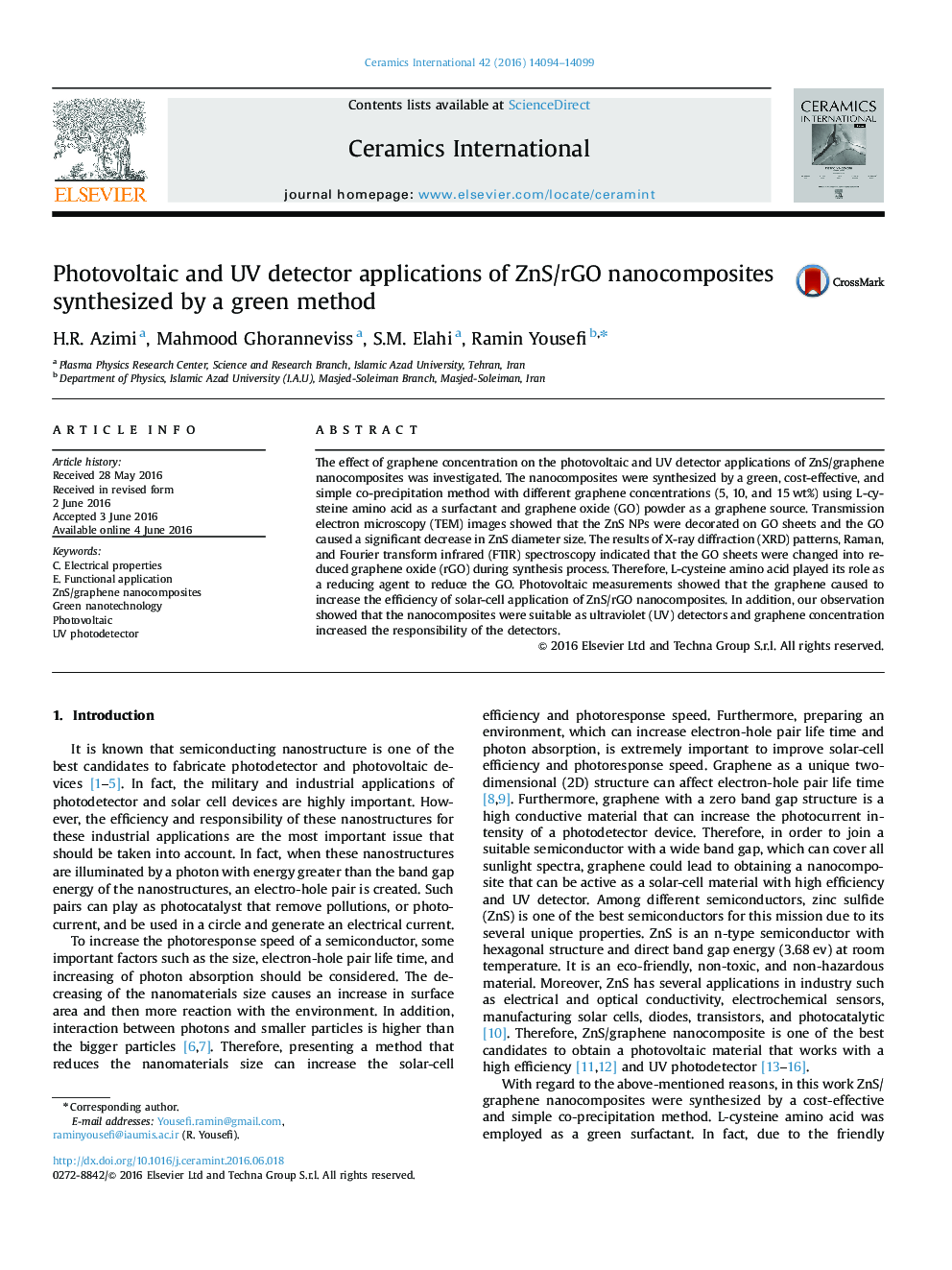| کد مقاله | کد نشریه | سال انتشار | مقاله انگلیسی | نسخه تمام متن |
|---|---|---|---|---|
| 1458583 | 989579 | 2016 | 6 صفحه PDF | دانلود رایگان |

The effect of graphene concentration on the photovoltaic and UV detector applications of ZnS/graphene nanocomposites was investigated. The nanocomposites were synthesized by a green, cost-effective, and simple co-precipitation method with different graphene concentrations (5, 10, and 15 wt%) using L-cysteine amino acid as a surfactant and graphene oxide (GO) powder as a graphene source. Transmission electron microscopy (TEM) images showed that the ZnS NPs were decorated on GO sheets and the GO caused a significant decrease in ZnS diameter size. The results of X-ray diffraction (XRD) patterns, Raman, and Fourier transform infrared (FTIR) spectroscopy indicated that the GO sheets were changed into reduced graphene oxide (rGO) during synthesis process. Therefore, L-cysteine amino acid played its role as a reducing agent to reduce the GO. Photovoltaic measurements showed that the graphene caused to increase the efficiency of solar-cell application of ZnS/rGO nanocomposites. In addition, our observation showed that the nanocomposites were suitable as ultraviolet (UV) detectors and graphene concentration increased the responsibility of the detectors.
Journal: Ceramics International - Volume 42, Issue 12, September 2016, Pages 14094–14099